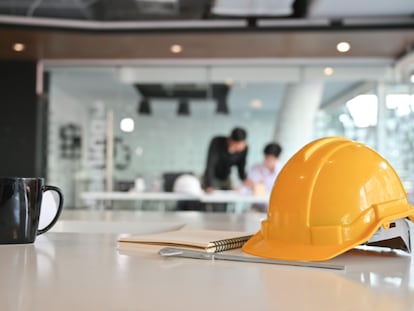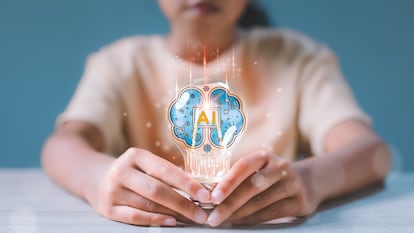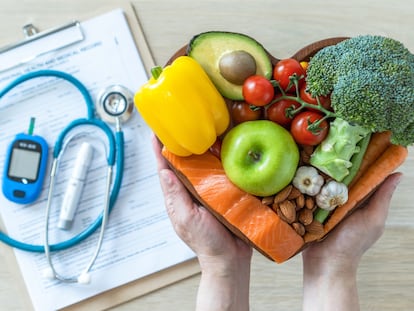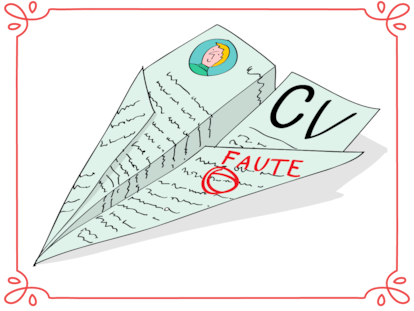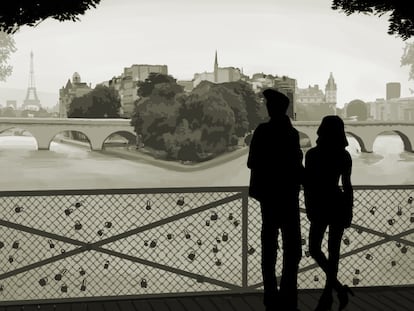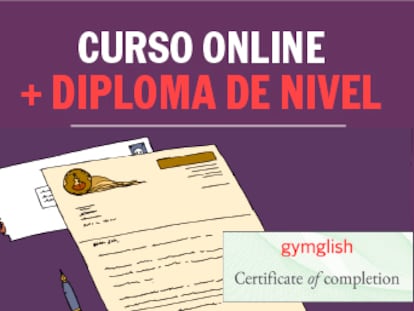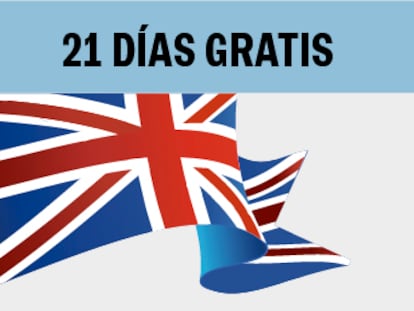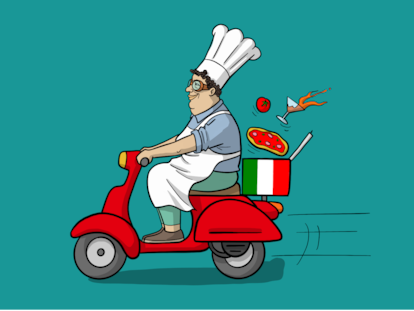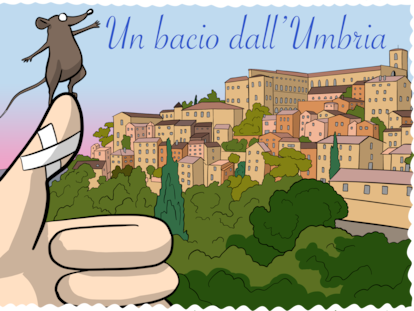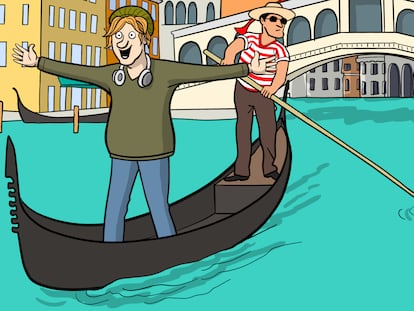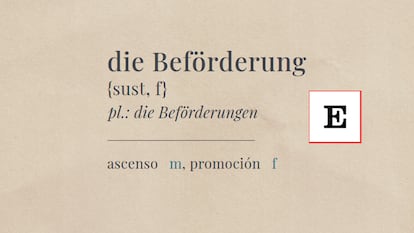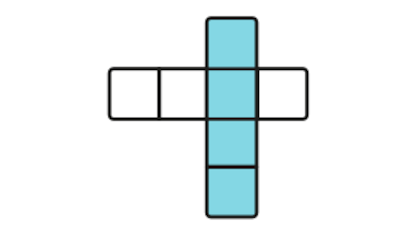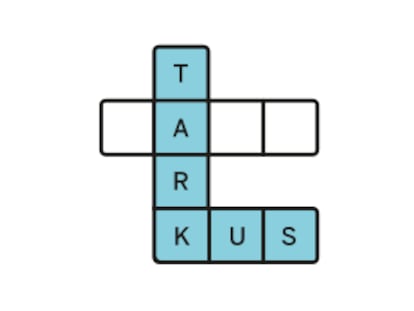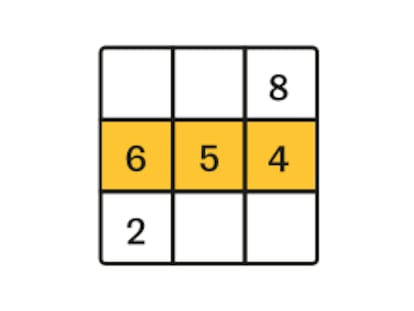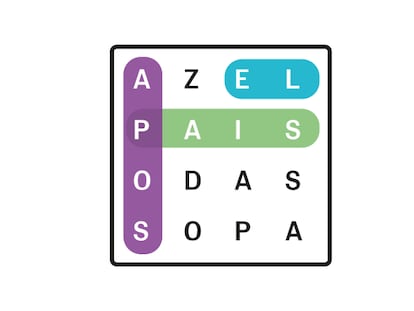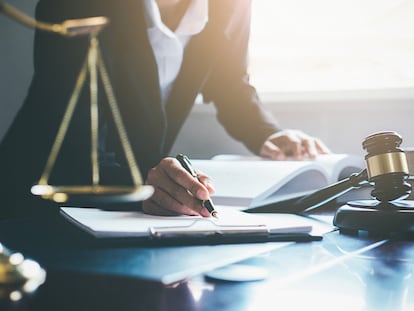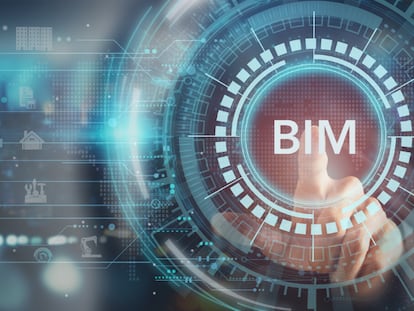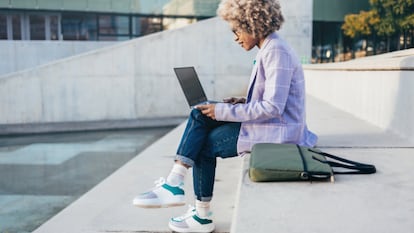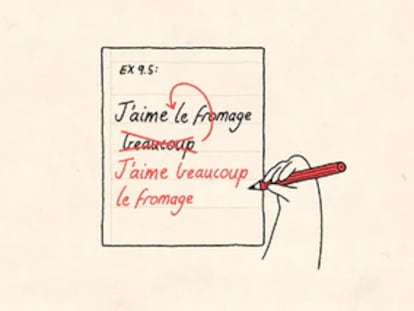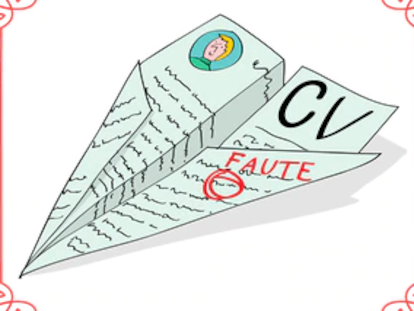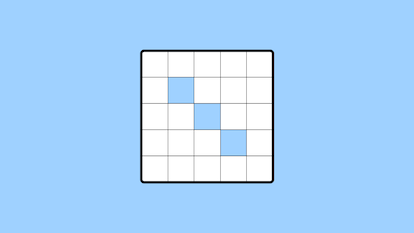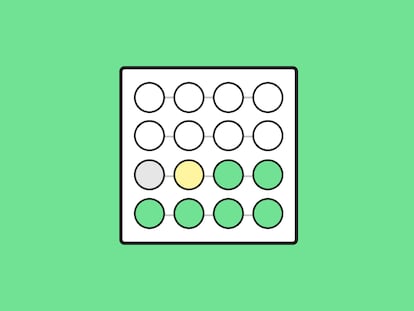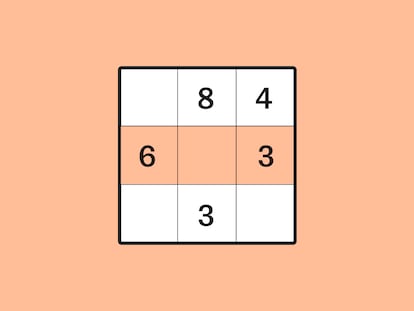Survivors of Alto Remanso massacre in Colombia commemorate their dead, despite their exile
This past Friday, in Bajo Putumayo, another anniversary was held to remember the military operation that killed at least eight civilians. At the time, authorities tried to pass the victims off as guerrillas killed in combat
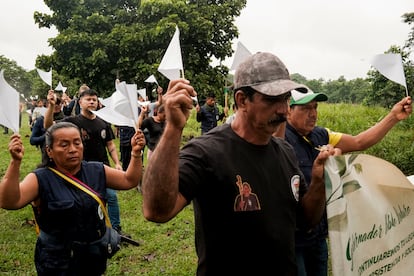

Fidelina Cruz, 72, wears a black T-shirt. A photo of her husband, Pablo Panduro Conquinche, is printed on the left side of her chest. She wears this shirt every March 28. The woman dons this uniform alongside the rest of the members of Bajo Remanso, a rural community in the jungles of the Colombian department of Putumayo. This past week, she commemorated the third anniversary of Pablo’s assassination. At the time of his death, he was the Indigenous governor of the community.
She travels three hours by river from the urban center of Puerto Leguízamo, where she has lived ever since the attack. She takes the same route by boat that her husband traveled just hours before he died in a military operation in Alto Remanso, a hamlet near Bajo Remanso. This past Friday, the residents gathered to remember the former leader of the Kichwa people with a Mass. A procession follows, with flags and white balloons, to the abandoned house where Panduro lived until his death. “This was supposedly the rifle that our governor carried,” says Lucila Bastidas, raising the symbolic Indigenous baton of command. A minute of silence follows.
At almost the same time, just over a mile away through the jungle or along the Putumayo River, Rodolfo Pama, 53, places a white cross on a cement base. It marks the spot where his son, Brayan Santiago Pama, was shot dead by a sniper during an operation. He was only 16 years old. On the grass rests another cross he planted a year after the massacre, which the wind and harsh climate of the Amazon rainforest have already toppled. He has also traveled from Puerto Leguízamo, where he now lives, to commemorate the three years since the tragedy. He retraces the steps that Santiago took before his death. He tells EL PAÍS that his tribute to his son is to return, every year, to the place where it all happened.
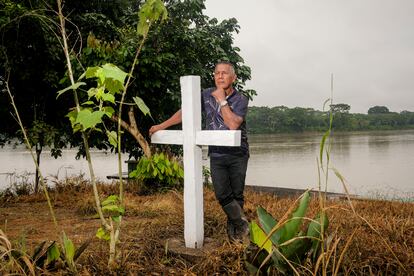
On March 28, 2022, the Military Forces of Colombia carried out an operation by air, water and land. The official target was the Border Command, an armed wing that belongs to the dissident group of the defunct FARC that, even today, maintains absolute control of the area. But far from hitting the criminals, the soldiers opened fire in the middle of a community bazaar, where residents were collecting funds to build a road that would connect them to the banks of the Putumayo River. Eleven people died, four were wounded and around 350 were displaced. It was the largest massacre during President Iván Duque’s term (2018 - 2022) and one of the most resounding scandals of his administration.
The executive branch initially reported the dead and wounded as being guerrillas who were killed in combat. Then-Defense Minister Diego Molano presented the operation as a blow to the dissidents. His boss, then-President Duque, proudly echoed the message. But since then, the Attorney General’s Office, which is still investigating irregularities in the operation, has determined that at least eight of the dead civilians were unarmed and defenseless. These victims included a pregnant woman, a community leader, an Indigenous governor and a minor. The Colombian Army has defended the legality of the incursion, but has presented no evidence to support it.
For almost a year and a half, Alto Remanso and Bajo Remanso became ghost towns. In Bajo Remanso, when the population began to return a year after the operation, they felt the loss of the governor. “We were left without a native language teacher, because he was the only one who taught the Kichwa language to children and adults,” says 73-year-old grandmother Gloria Condo Alvarado, the midwife of the Indigenous reservation. Today, Gloria is the only member of the community who speaks that language, but she’s been unable to replicate the governor’s legacy, because she cannot read or write. “He was the only person who had that gift,” most residents note.

Pablo Panduro was also the community’s only doctor, as well as the taita, who oversaw the reservation’s harmony and spirituality. Yarley Ramírez, who assumed the governorship of Bajo Remanso after Panduro was assassinated, says that her predecessor had the wisdom to heal sick children and animals. He knew which plants to use and was in charge of the Amazonian Indigenous medicinal ritual, which connected locals with the spirits. Every March 28th, in his memory, the village prepares for a night of ancestral medicine, prepared by Grandmother Condo. But, in the absence of a taita, they borrow one from the Puerto Nariño reservation to lead the ceremony. The ceremony ends at around 9 p.m., while the entire village gathers around the community hall. A bonfire is lit on the grass. Everyone places hammocks on the roof for the night of taking the remedy, or yagé (Ayahuasca).
The hall is dark and silent. The taita chants to summon the spirits, while waving a bunch of leaves in his hands. He pauses to smoke and blow tobacco over the Ayahuasca bottle, then asks the men who will be drinking to form a line. After this, he calls the women. Each one drinks from the same totumo (gourd). Around them, other Indigenous people chew coca leaves with ambil (a mixture of tobacco) to accompany the gathering. The reservation remains silent — but awake — for about seven hours. Then, at dawn, the taita begins the closing ritual of yagé. Each person shares what the plant has shown them.
The next day, the commemorative Mass to mark the three-year anniversary of the massacre is led by Father Francis Kitavi, a parish priest from Kenya who arrived in Colombia four years ago to fulfill his mission here. During the days of the military operation, the priest was one of the first to arrive at the village, along with a bishop, to offer a prayer for the victims.
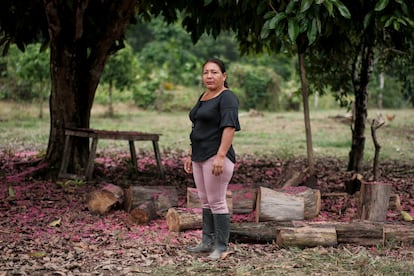
In Alto Remanso, where the majority of the population is rural, yet not Indigenous, the only one who commemorates the massacre is Rodolfo Pama. Most of the village’s residents arrived one or two years after the military operation and regrouped. Pama fights to preserve the memory of what happened and, every year, he walks around the village and reconstructs the events from memory. This past March, in a conversation with EL PAÍS, he recounted the operation from his home, where he was when the shots began.
He recalls how, during the first month after the massacre, rifle casings and shards of broken glass from the houses that were hit could be counted by the handful on the ground. In one of the houses that suffered the most, bullet fragments still remain embedded in the wood, having entered through the side and passed through three walls. In another, one of the rifle shots struck the glass of a photograph hanging on the wall. “They didn’t even respect the deceased,” a woman laments, pointing at the hole dug into the chest of the man in the photograph.
Yarley Ramírez says that community-led reconstruction in both villages was slow and steady. When she took over as governor — replacing the murdered Panduro — there were only six families in Bajo Remanso. Now, there are 27. After the operation, they moved to the other side of the river, where the jungle falls under Ecuadorian territory. “Even the dogs jumped on the boats to flee while the bullets rang out. We didn’t understand what was happening, but we all went out to take cover, without speaking to each other.” They remained hidden for nearly two hours while the shooting lasted. Then, they set out across the river toward Alto Remanso, in order to look for the governor and family members who had participated in the bazaar. But a line of military boats blocked their way. A day later, Ramírez learned from a local radio station that the government had accused them of being guerrillas
Her sister, Derly, survived the attack because she managed to take cover behind a palm tree. There, lying on the grass, she saw Divier Hernández — the president of the village’s Community Action Board — and his pregnant wife, Ana María Sarrias, fall. “The bullet that killed Divier knocked him across my knees. His wife, who watched him die, shouted to me: ‘They killed my husband, ma’am! Help me!‘” Somehow, Derly jumped into the river and snuck under the roots of a tree until the soldiers stopped shooting. For almost two years, she lived as a displaced person, working informal jobs in Puerto Asís and Leguízamo. She returned less than a year after leaving. Today, she has once again taken up the baton of commanding the Indigenous Guard. She’s the veritable sheriff of her community.

However, the shadow of stigmatization remains. “When the Army stops you at a checkpoint and asks where you’re from, saying Alto Remanso or Bajo Remanso is almost like putting a cross on your head,” Yarley sighs. Therefore, in addition to remembering the dead, they seek to clear the name of their communities. They say that they’ve prohibited the Colombian Military from entering their territory. They also demand that illegal groups respect the self-government of their local council. However, the Border Command has taken over almost all the riverside communities in the region of Bajo Putumayo.
A human rights defender from the region who requested anonymity, as he has already been threatened by the group, says that the most recent measure was to require all Community Action Board leaders or Indigenous governors to include a member of the Border Command in each community’s WhatsApp group. “They went from very conventional territorial control strategies, like patrols, to even controlling who people talk to, what they say and when they say it.” In other towns closer to the city of Puerto Leguízamo, people have reported that combatants sit at night in the “tambos” — the empty spaces between the floor of the stilt houses and the ground — listening to conversations. At the checkpoints set up on the Putumayo River, the communications route for the entire region, they stop boats and demand cell phones, in order to review text and WhatsApp messages. Silence prevails.
Despite this fear, the victims of the military operation have cried out loudly. And their calls have reached far and wide. The Inter-American Commission on Human Rights (IACHR) is studying the case, while the Attorney General’s Office of Colombia has laid charges of homicide and attempted homicide against 25 soldiers. However, the case has not reached the highest ranks.
At the commemoration of the massacre, Juan David Ayure, one of the lawyers handling the case, offers some news: the soldiers — who were preventively sent to a prison in a military garrison — were released by a judge in October of 2024. “We have information that five of them have left the country and are now fugitives. Their lawyers have stated in the hearings that they haven’t had any further contact with them,” he says.
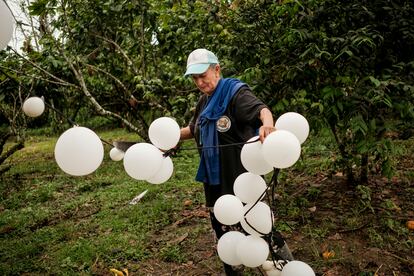
As the process moves forward, nobody seeking justice has been exempt from risks. Rodolfo Pama travels in a small canoe from Alto Remanso to Bajo Remanso. He whispers that, two months ago, he received death threats in Puerto Leguízamo. They mistook him for his brother. And, on a motorcycle taxi ride, a man told him to be careful with what he was doing to demand justice for Brayan Santiago.
In 2023, when she travelled to the Congress to share what had happened, Yarley received death threats on her cell phone. “It’s been very hard to simply ask for the truth to be told… we don’t know how far it will take us.” The governor’s voice breaks and her eyes water.
On the night of the yagé ritual, the Indigenous leaders dedicated the ceremony to Pablo Panduro so that, in his honor, they could win other battles, such as the one to formalize the status of their Indigenous reservation with the government. “That was [Pablo’s battle] when he was murdered,” says his wife, Fidelina. Another Indigenous guard says, over breakfast, that Panduro arrived for his commemoration. “Last night, [he] came and sat here, sharpening his machete before going to work. He was sitting next to the taita. He appears before us every March 28th.”
Translated by Avik Jain Chatlani.
Sign up for our weekly newsletter to get more English-language news coverage from EL PAÍS USA Edition
Tu suscripción se está usando en otro dispositivo
¿Quieres añadir otro usuario a tu suscripción?
Si continúas leyendo en este dispositivo, no se podrá leer en el otro.
FlechaTu suscripción se está usando en otro dispositivo y solo puedes acceder a EL PAÍS desde un dispositivo a la vez.
Si quieres compartir tu cuenta, cambia tu suscripción a la modalidad Premium, así podrás añadir otro usuario. Cada uno accederá con su propia cuenta de email, lo que os permitirá personalizar vuestra experiencia en EL PAÍS.
¿Tienes una suscripción de empresa? Accede aquí para contratar más cuentas.
En el caso de no saber quién está usando tu cuenta, te recomendamos cambiar tu contraseña aquí.
Si decides continuar compartiendo tu cuenta, este mensaje se mostrará en tu dispositivo y en el de la otra persona que está usando tu cuenta de forma indefinida, afectando a tu experiencia de lectura. Puedes consultar aquí los términos y condiciones de la suscripción digital.
More information
Archived In
Últimas noticias
There is as much life left to discover on planet Earth as that which is already known
Dozens presumed dead, around 100 injured in fire at Swiss Alps bar during New Year’s celebration
Is porn for women different from conventional porn? We spoke to those who make it
Cartagena de Indias is sinking: What can the city do to mitigate it?
Most viewed
- Sinaloa Cartel war is taking its toll on Los Chapitos
- Reinhard Genzel, Nobel laureate in physics: ‘One-minute videos will never give you the truth’
- David King, chemist: ‘There are scientists studying how to cool the planet; nobody should stop these experiments from happening’
- Oona Chaplin: ‘I told James Cameron that I was living in a treehouse and starting a permaculture project with a friend’
- The Interoceanic Train, the Mexican alternative to the Panama Canal




